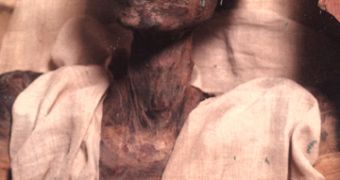The Canopic jars have been on display in the Louvre Museum (Paris) for a century (more precisely from 1905) holding the embalmed innards of the great Egyptian pharaoh Ramses II the Great (1302-1213 BC).
But a new chemical analysis made by a French team revealed that the four pots, scripted with hieroglyphs, are not what people thought they are: the jars contained just ordinary cosmetics, from a much later date.
The jars exhibit the name of Ramses II, and appeared to contain embalmed organs, even a trace of what seemed to be heart tissue, even if Ramses' mummy still possesses its heart, an organ ancient Egyptians left inside mummies, as they believed it was weighed in the afterdeath by the god Thoth. "The jars look like the pots of unguents found in King Tut's tomb, among others, not like other Canopic jars," says Jacques Connan of the University of Strasbourg, France.
Connan's team analyzed samples of the material from the pots by employing mass spectrometry and chromatography techniques used in the petroleum industry to detect complex organic mixtures.
The analysis discovered no trace of beeswax, bitumen or other materials commonly employed by the ancient Egyptians for embalming.
The ratio of non-radioactive carbon isotopes indicated animal fats, the fatty acids indicating pig fat. The researchers detected molecules emerged from the combination of fatty acids with aromatic alcohols encountered in pine or cedar, products imported by the ancient Egypt from the Levant area.
The researchers believe the jar probably contained scented pomade, made by heating aromatic wood in fat, employed by ancient Egyptians to anoint their heads and sacred images.
The radioactive carbon indicated an age of the material at 1035 BC, more or less 50 years, about two centuries after Ramses II died. A yellowish powder proved to be pure mastic tree resin, still employed in foods and embalming from 275 BC.
It appears that the pots were fabricated for a temple to the sun god Amun-Ra, built by Ramses II; that's why his name appears on the jars, and they were employed for ritual ointments, then later recycled for keeping resin-embalmed remains. "There are thousands of objects like this in museums that have been attributed, but never verified," Connan said.

 14 DAY TRIAL //
14 DAY TRIAL //